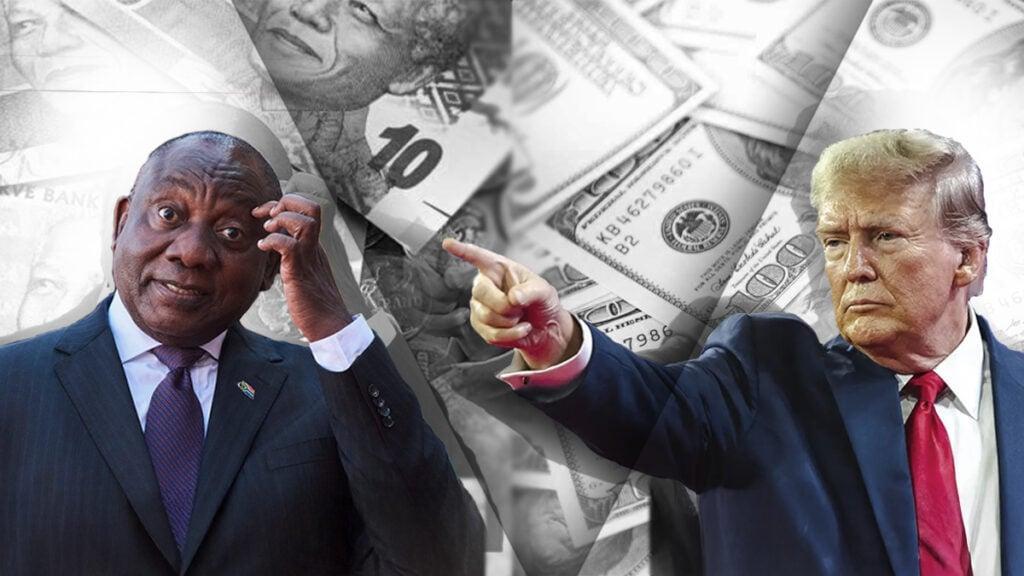Shaun Jacobs
Africa-Press – South-Africa. South Africa is running out of time to avoid facing elevated tariffs on its exports to the United States, which threaten to crush the local citrus and automotive industries.
The effect of tariffs on other South African exports will be significantly more muted, with the country more dependent on China and the European Union (EU) for exports.
However, tariffs on these economies could slow their economic growth and limit South Africa’s exports, weakening the rand and potentially pushing inflation much higher.
Apart from this, just the uncertainty regarding which level the tariffs will eventually settle at has limited investment from businesses and investors in the local economy, limiting growth.
This is feedback from Old Mutual Wealth’s chief investment strategist, Izak Odendaal, who outlined the potential impact of elevated tariffs on South Africa’s economy.
From a South African point of view, the 30% tariffs are a blow, though it is not necessarily the final number, Odendaal said.
The South African government has confirmed it is still talking to the US in search of concessions and has signed a pre-agreement framework.
It appears as though tariffs are settling at around 15% for the countries that have successfully negotiated a deal with the United States, such as the EU and Japan. South Africa has significantly less leverage.
However, Odendaal said the impact of the tariffs on South Africa may be overblown, with only around 8% of exports by value going to the American market.
Of this, minerals and metals make up a substantial portion and are likely not impacted by new duties as they are classified as critical imports by the United States.
In other words, the tariffs are not a recession-inducing threat for a local economy that benefits from more stable electricity supply, lower inflation and lower interest rates.
Standard Bank’s economics unit has calculated that for every 10 percentage point increase in the tariff rate, South Africa will lose 0.1% of GDP growth.
This may not appear significant, but considering the bank only expects South Africa to grow at 1.1% in 2025, a 30% tariff rate could shave off a significant amount of GDP growth.
Some firms and sectors face particularly major headwinds, as they are heavily reliant on exports to the United States.
One is agriculture, where citrus farmers in particular have built strong export links with the United States since South Africa is in a different growing season to America.
Instead, South African orange farmers compete with other southern hemisphere growers, notably Chile and Peru. For the time being, they face a 10% tariff, giving them an advantage.
The other sector heavily impacted is the automotive industry. Exports to the US have already fallen sharply, which might lead to parent companies scaling back local operations.
This happens at the same time as competition in the domestic market is heating up against Chinese imports, while the inevitable longer-term shift to electric vehicles poses another set of questions.
The real threat to South Africa
Chinese yuan on the map of Africa continent. Trading between China and african countries, tourism, economy and investment
The major threat to South Africa from tariffs is the secondary effect the country may feel from duties placed on its major trading partners in China and the EU.
In particular, a trade war between the United States and China could result in South Africa entering a vicious cycle of declining growth and rising inflation.
As South Africa’s largest trading partner, a slowdown in the Chinese economy would significantly impact exports, economic growth, the strength of the rand, and inflation.
Standard Bank’s chief economist, Goolam Ballim, explained that these indirect impacts are what the bank is most concerned about in the immediate future.
“We do see the transmission to South Africa as coming from more of an indirect channel, from the decline in global growth due to tariffs and greater uncertainty,” Ballim told Daily Investor.
With South Africa being a small, highly open economy, it is heavily reliant on global growth to drive demand for its commodity exports and its broader economic performance.
China is particularly important for South Africa as the largest consumer of its exports and the key driver of demand for commodities.
“Lower commodity prices from lower demand in China will result in a balance of payments shock to South Africa and other African economies,” Ballim explained.
“A reduction in volumes and prices of commodities can result in weaker currencies due to this balance of payment shock. Weaker currencies lead to higher inflation that can trigger higher interest rates.”
“Through that, you get a sense of how low commodity prices and volumes can foster a vicious cycle of reduced exports, a weaker currency, high inflation, tighter monetary policy, weaker consumer spending, weaker investment appetite, and slower growth.”
This can also work in the inverse way, with stronger demand from China driving African currencies higher, resulting in lower inflation and faster economic growth.
“We think that, for the most part, South Africa has been closer to a vicious cycle in recent months because of the potential trade war and elevated tariffs, resulting in Chinese growth slipping to 4% year-on-year.”
However, Ballim did not know that China is showing signs of resilience amid successive economic shocks, which bodes well for commodity demand in the coming years.
Standard Bank estimates that commodity prices over the next two years could rise by around 20%, with an emphasis on precious metals.
Thus, it seems some level of support for commodity prices in the near term, which will boost the economic growth of South Africa and other African eocnomies.
Source: dailyinvestor
For More News And Analysis About South-Africa Follow Africa-Press






